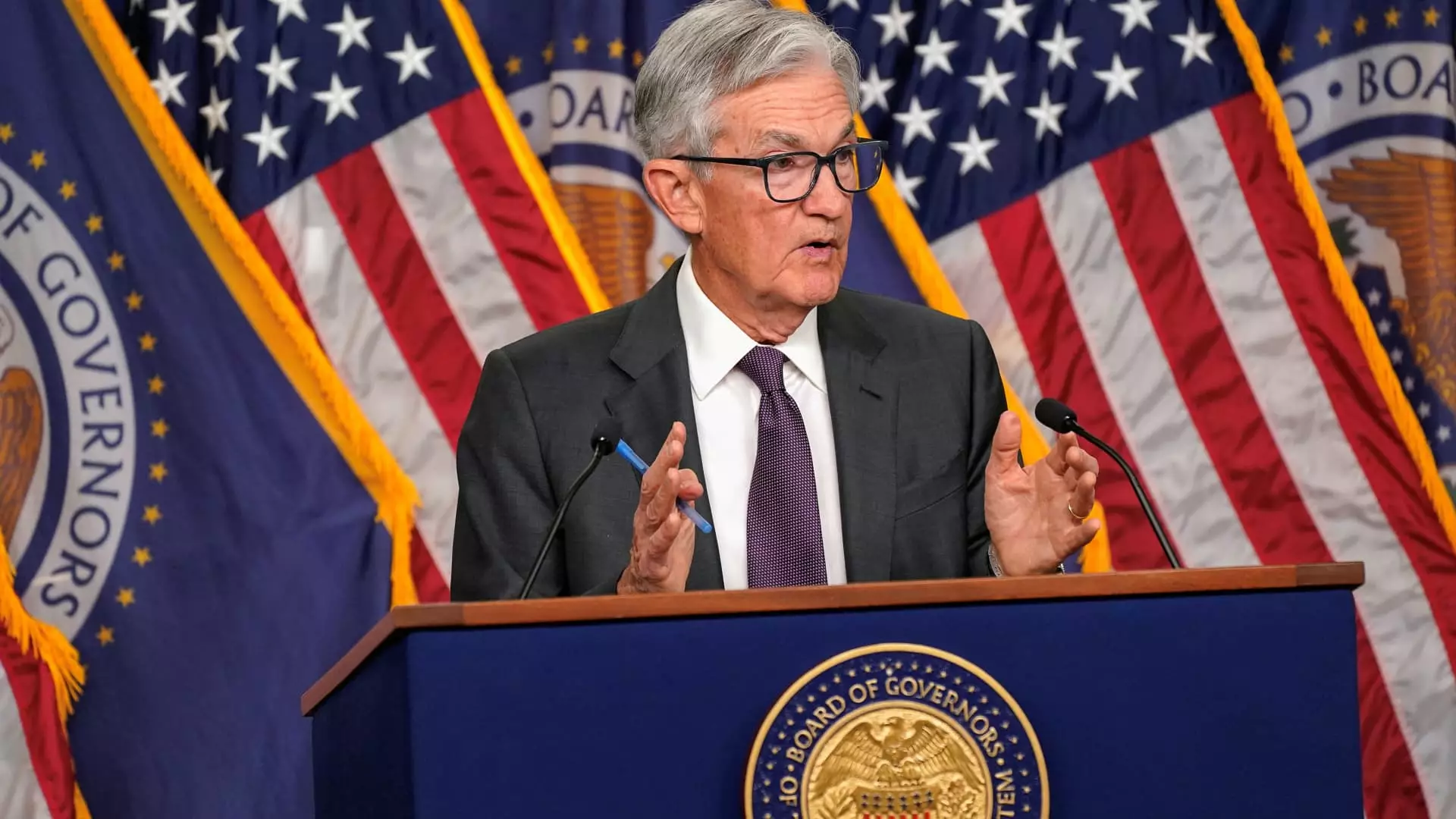In a pivotal moment for the American economy, the Federal Reserve recently decided to maintain benchmark interest rates, holding them steady between 4.25% and 4.5%. This decision, rendered amid rising concerns over President Donald Trump’s import tariffs, indicates not only a hesitance to trigger a recession but also a sense of trepidation surrounding the future trajectory of fiscal policy. As the global economy begins to slow, and questions around the sustainability of the current employment landscape mount, this caution from the Fed highlights some unsettling undercurrents that could engulf America’s financial future.
By deciding against an immediate cut in interest rates, the Federal Open Market Committee (FOMC) has shifted its focus to the longer-term ramifications of the current environment. The deliberated agenda to decrease rates later could reflect an understanding that the paths of inflation and economic growth are anything but linear. While markets reacted favorably to the potential for future rate reductions—evidenced by a notable rise in the Dow Jones Industrial Average—it is crucial to note that this optimism may be masking deeper systemic issues.
Tariffs and a Fragile Economy: Unpacking the Risks
The role of tariffs in this economic landscape cannot be overstated. Designed ostensibly to protect American industries, these tariffs have prompted rising doubts about the overall health of the economy. Fed Chair Jerome Powell made a significant observation during a recent press briefing when he noted the potential for tariffs to create upward pressure on prices. This relationship between trade policy and inflation not only complicates the central bank’s dual mandate of fostering employment while controlling prices, but also underscores the delicate balance the Fed must navigate.
As the Fed grapples with economic indicators showing a slowdown in consumer spending, their cautious tone suggests a looming crisis. While consumer sentiment may appear to hold up under pressure, deeper analysis reveals that retail spending is teetering, with inflation expectations on the rise. If consumers are preparing for increased prices due to tariffs, any semblance of economic stability could be at grave risk, leading to further contraction that both the Fed and the government seek to avoid.
Customer Spending and Labor Market Concerns
Another alarming trend emerging from this context is the notable “moderation in consumer spending.” While a spike in retail activity in February gave some economists hope, it falls short of the broader expectations regarding economic growth. The FOMC’s downgrading of the GDP growth outlook to a mere 1.7% for this year serves as a stark reminder of the fragility of the economy. Consequently, any optimism surrounding increased consumer confidence should be approached with skepticism.
Moreover, the labor market is showing signs of distress. Nonfarm payrolls fell short of expectations in February, and an alarming rise in the broader measure of unemployment—fuelled by discouraged workers—suggests that the job landscape is more precarious than many would like to admit. As Powell highlighted, any unexpected vulnerabilities in the labor market may precipitate immediate adjustments in monetary policy. Hence, while the Fed’s current stance may appear measured, the underlying conditions are increasingly unsettling.
The Inconsistent Landscape of Inflation
Perhaps the most troubling update from the Fed was its upward revision of inflation expectations, now forecasted at 2.8%. This alarming figure raises profound questions about the direction in which the economy is heading. If inflation continues to exceed the Fed’s target, the paradox of maintaining low unemployment while holding inflation at bay will prove increasingly difficult. The idea that interest rates may need to be adjusted more drastically as inflation climbs is further complicated by global pressures that remain deeply unpredictable.
Interestingly, the Fed’s choices regarding “quantitative tightening” have substance but leave much to be desired. Allowing only $5 billion in maturing Treasurys to roll off each month signals an ongoing concern about liquidity, yet this measure appears insufficient given the economic context. The extended timeline for expected rate cuts—moving gradually through to 2027—reflects not just a strategy, but also a fear of reckoning with uncharted economic waters.
It’s clear that the Federal Reserve finds itself at a crossroads. While the decision to keep interest rates steady may seem prudent for the moment, it is emblematic of a larger struggle against uncertain external factors and internal economic health. Navigating the complex intersection of policy, consumer behavior, and global challenges will require more than cautious optimism; it demands bold action and a clear-eyed recognition of the risks at hand.

